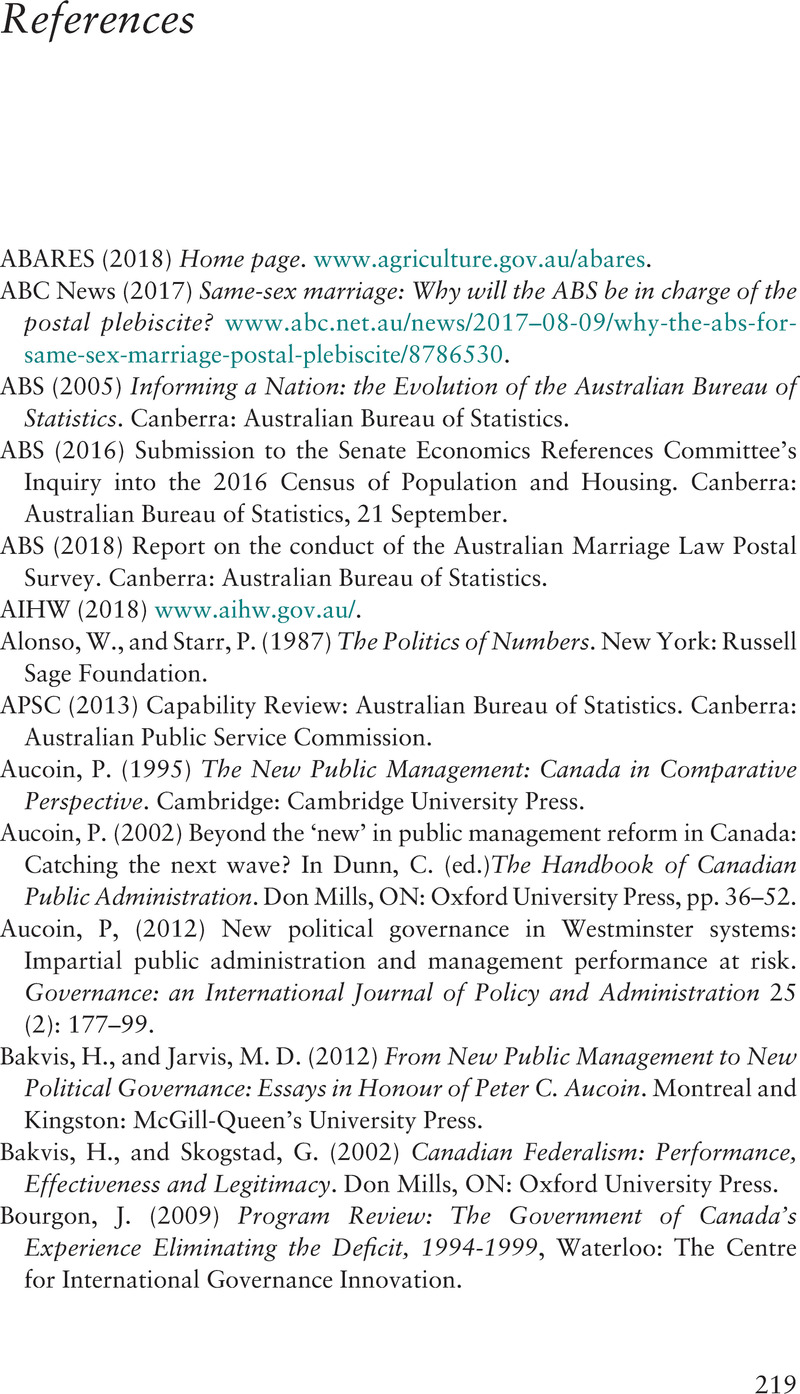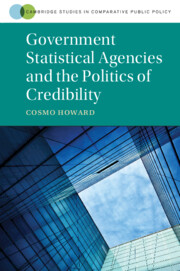Book contents
- Government Statistical Agencies and the Politics of Credibility
- Cambridge Studies in Comparative Public Policy
- Government Statistical Agencies and the Politics of Credibility
- Copyright page
- Dedication
- Contents
- Tables
- Acknowledgements and Declaration
- Acronyms and Abbreviations
- Introduction
- 1 Credibility and Official Statistics
- 2 Australia
- 3 Canada
- 4 Sweden
- 5 The United Kingdom
- 6 The United States of America
- 7 Conclusions
- Notes
- List of Cited Interviews by Order of Appearance
- References
- Index
- References
References
Published online by Cambridge University Press: 05 March 2021
- Government Statistical Agencies and the Politics of Credibility
- Cambridge Studies in Comparative Public Policy
- Government Statistical Agencies and the Politics of Credibility
- Copyright page
- Dedication
- Contents
- Tables
- Acknowledgements and Declaration
- Acronyms and Abbreviations
- Introduction
- 1 Credibility and Official Statistics
- 2 Australia
- 3 Canada
- 4 Sweden
- 5 The United Kingdom
- 6 The United States of America
- 7 Conclusions
- Notes
- List of Cited Interviews by Order of Appearance
- References
- Index
- References
Summary

- Type
- Chapter
- Information
- Government Statistical Agencies and the Politics of Credibility , pp. 219 - 227Publisher: Cambridge University PressPrint publication year: 2021



